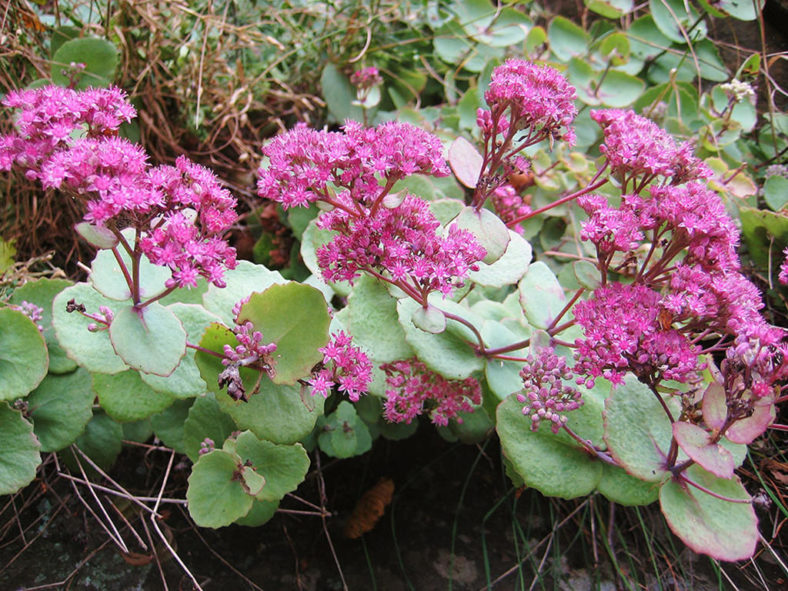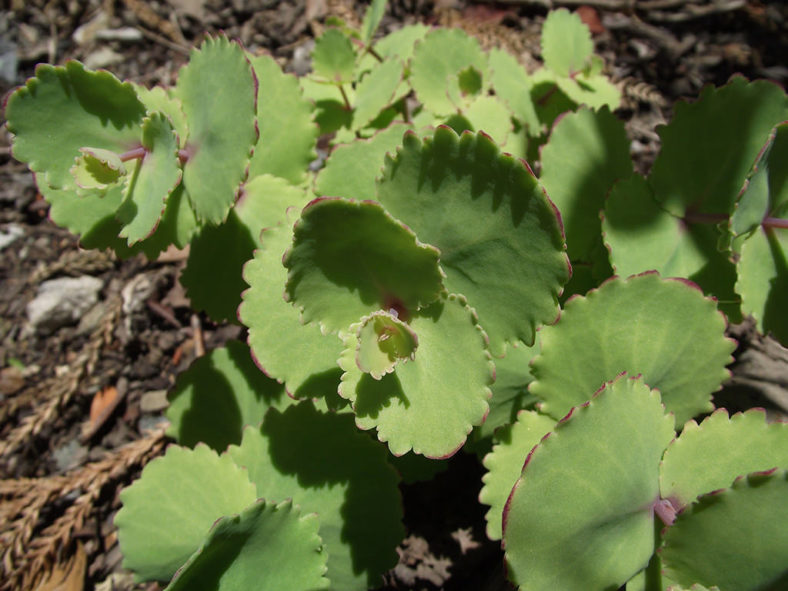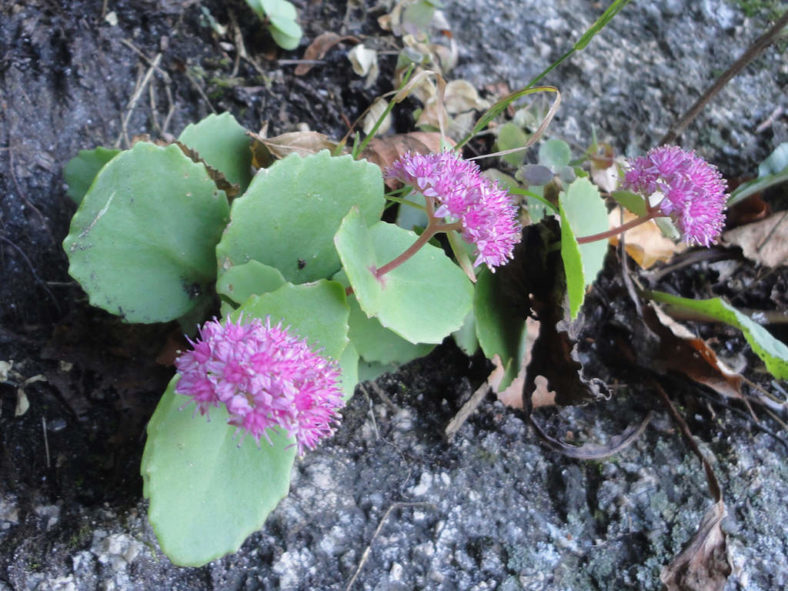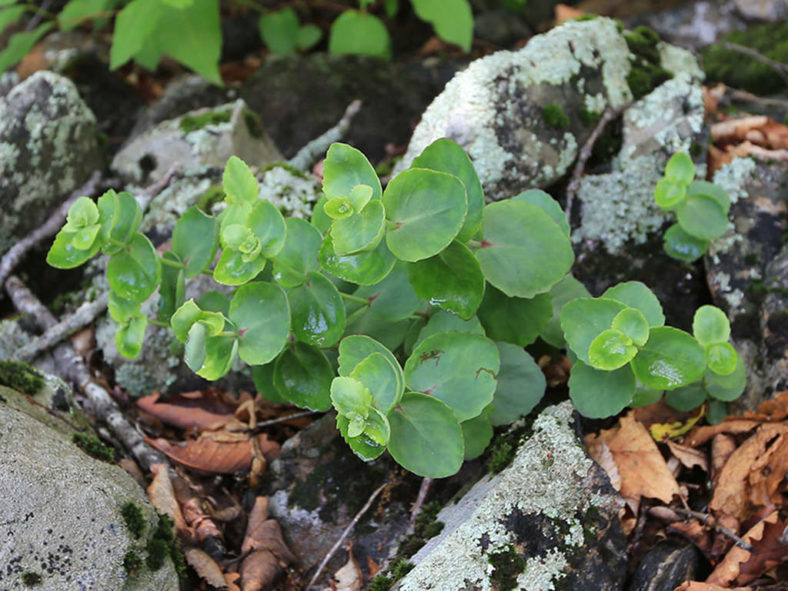Scientific Name
Hylotelephium ussuriense (Kom.) H.Ohba
Synonym(s)
Hylotelephium ussuriense var. ussuriense, Sedum duckbongii, Sedum rotundifolium, Sedum tsugaruensis, Sedum ussuriense, Sedum ussuriense var. ochrantherum
Scientific Classification
Family: Crassulaceae
Subfamily: Sempervivoideae
Tribe: Telephieae
Genus: Hylotelephium
Etymology
The specific epithet "ussuriense (oo-soo-ree-EN-see)" means "Of or from Ussuri" and refers to the Ussuri River that runs through Khabarovsk and Primorsky Krais, Russia, and the southeast region of Northeast China.
Origin
Hylotelephium ussuriense is distributed in Jirisan National Park and its vicinity (only in four valleys) in South Korea, along the Tumen River (in the boundary between China, North Korea, and Russia) and the basin of the Ussuri River in Russia.
Description
Hylotelephium ussuriense, formerly known as Sedum ussuriense, is a succulent plant with thick rootstock and ascending, flowering stems that can grow up to 2 feet (60 cm) tall. It varies in the height of flowering stems and the shape, size, and serration of leaves. The leaves are opposite, sometimes alternate in the lower parts. They are pale green, broadly ovate to orbicular, measuring up to 2 inches (5 cm) long and wide. The foliage dies back to the ground in winter, and new growth appears in spring.
The small flowers have magenta petals and reddish-orange anthers. They appear from late summer to fall.

How to Grow and Care for Hylotelephium ussuriense
Light: This succulent prefers full sun. It tolerates light to partial shade in hot summer climates but will produce weak, floppy growth when grown in too much shade. Plant your H. ussuriense in an area of your garden with 6 hours of sunlight daily.
Soil: H. ussuriense does not need rich soil but requires excellent drainage. Choose a commercial potting mix for succulents, or make one yourself.
Temperature: This plant is tolerant of heat and drought and is cold-hardy, making it a popular outdoor succulent. H. ussuriense can withstand temperatures as low as -30 °F (-34.4 °C). USDA Plant Hardiness Zones 4a to 9b, -30 to 30 °F (-34.4 to -1.1 °C).
Watering: The best way to water H. ussuriense is to use the "soak and dry" method. Get the soil completely wet, and then wait until it is dry before watering again.
Fertilizing: Feed annually with a balanced fertilizer. According to package directions, apply the fertilizer to the soil in spring as new growth appears.
Repotting: Plants in containers require little more care than those in gardens. Repot your H. ussuriense when it outgrows its current pot by moving it to a larger pot to hold the plant better. Spring is the best time to repot this plant. Make sure the soil is dry before you begin the repotting process.
Propagation: This succulent can be grown from seeds, division, or stem cuttings. Sow seeds in spring. Dividing your H. ussuriense is easy and can be carried out at almost any time in the growing season, though it is probably best done in spring or early summer. Propagate by stem cuttings in summer.
Learn more at How to Grow and Care for Hylotelephium.
Toxicity of Hylotelephium ussuriense
H. ussuriense can be mildly toxic to humans and animals.
Links
- Back to genus Hylotelephium
- Succupedia: Browse succulents by Scientific Name, Common Name, Genus, Family, USDA Hardiness Zone, Origin, or cacti by Genus
Photo Gallery
Click on a photo to see a larger version.


